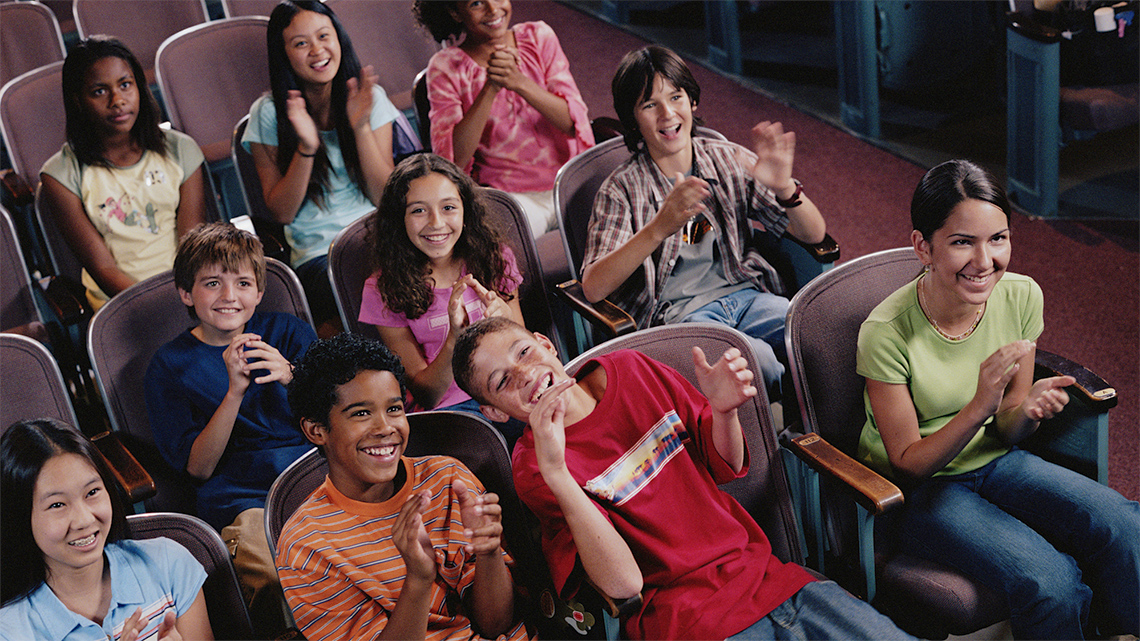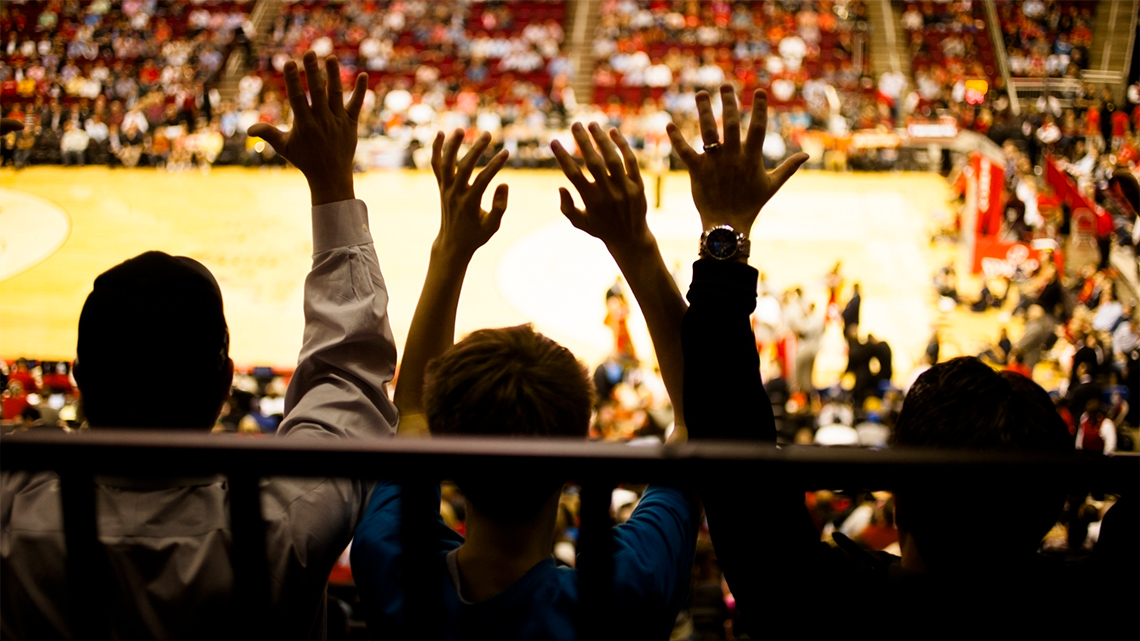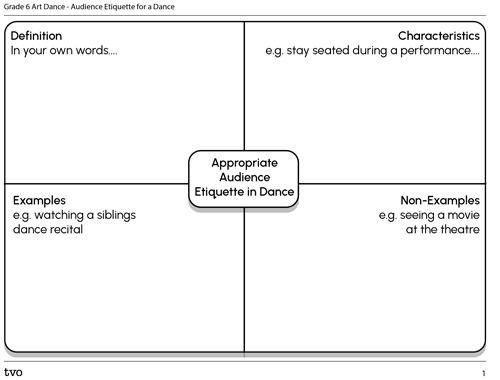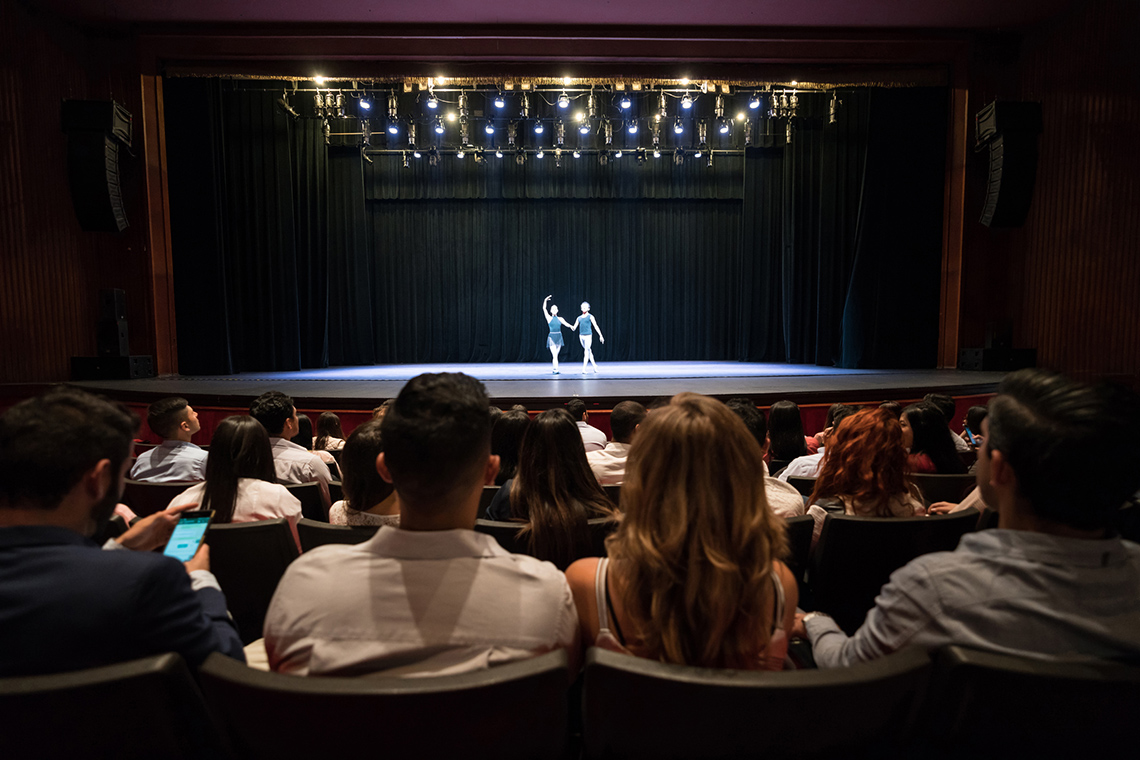Minds On
Let’s get started!
Press the following tabs to access today’s vocabulary.
Audience etiquette describes appropriate behaviour for someone in the audience of an event or performance.
Press ‘Audience Etiquette’ to access its definition.
Appropriate behaviour for an audience member depends on the type of event or performance the audience member is attending.
Consider what would a good audience member be at a dance or theatre show where the audience sits in a dark, quiet auditorium and explores a performance on a stage?
How might this be different if someone were attending a sporting event where fans are able to cheer, get out of their seat, and eat and drink during the performance?
Or a loud rock concert where audience members often stand up in their seats, sing along, and use their phones to capture their favourite moments?
Record your initial ideas using a method of your choice.
Action
Get ready, get set…
Task 1: Different types of audiences
Let’s revisit the scenarios from the Minds On.

Theatre
What might be an example of appropriate audience behaviour for a dance or theatre show?
Press ‘Sample Answer’ to access a possible response for the question.
Turn off your phone, stay in your seat, engage quietly, etc.

A sporting arena
What might be an example of appropriate audience behaviour for a sporting event?
Press ‘Sample Answer’ to access a possible response for the question.
Cheer for your team, join in “the wave,” etc.

A music concert
What might be an example of appropriate audience behaviour for a rock concert?
Press ‘Sample Answer’ to access a possible response for the question.
Singing along to the song, using a phone to take pictures or videos, dancing to the music, etc.
Go!
Task 2: Defining appropriate audience etiquette for dance
Portfolio
Portfolio
Drawing on the brainstorm we previously did in this learning activity and your own ideas and experience, use the following Frayer Model to define what appropriate audience etiquette might be for a dance show.
It may be helpful to write the definition last, as the other boxes will help you determine a definition. Complete the Audience Etiquette for a Dance in your notebook or using the following fillable and printable document. If you would like, you can use speech-to-text or audio recording tools to record your thoughts. Consider adding your work to your dance portfolio.

Press the Activity button to access the Audience Etiquette for a Dance.
Activity (Open PDF in a new tab)Task 3: Different dances, different audiences?
Not all dance forms are the same. Similarly, depending on the type of dance performance, how the audience engages with the performance might be different. Consider the role of the audience in the following dance contexts.
In a ballet performance, the audience sits in a darkened theatre and explores the dance performance on a stage.

In a dance cypher, the audience stands around the performer in a circle and participates in the dance by cheering, clapping, or moving along with the dancer, who is performing in the centre of the circle.
Access the following video to learn more about dance cypher.
Consider the following:
- How does the genre or style of dance influence what is considered appropriate for the audience?
- Is there anything you would add or change to your Frayer Model graphic organizer?
Consolidation
Putting it all together
Task 1: Stars and wishes
Now that you know more about audience etiquette in various dance contexts, what do you think would make a good audience member in a classroom? How would you want the audience to respond if you were performing a dance piece in the classroom? In what ways do you think you could be a good audience member? What do you think you are still working on?

Portfolio
Portfolio
Using the following graphic organizer, identify:
- two ways that you think you would make you a good audience member (stars)
- something you think you are still working towards, as an audience member (a wish
Complete the Two Stars and Wish in your notebook or using the following fillable and printable document. If you would like, you can use speech-to-text or audio recording tools to record your thoughts. Consider adding your work to your dance portfolio.
 |
|
 |
|
 |
Press the ‘Activity’ button to access Two Stars and Wish.
Task 2: Review your learning
Use the following questions to reflect on your learning.
- Why is audience etiquette important?
- How can an audience influence a performance?
- In what way(s) are the performer(s) and audience members in a relationship with one another?
Record your responses using a method of your choice.
Reflection
As you read through these descriptions, which sentence best describes how you are feeling about your understanding of this learning activity? Press the button that is beside this sentence.
I feel…
Now, record your ideas using a voice recorder, speech-to-text, or writing tool.


